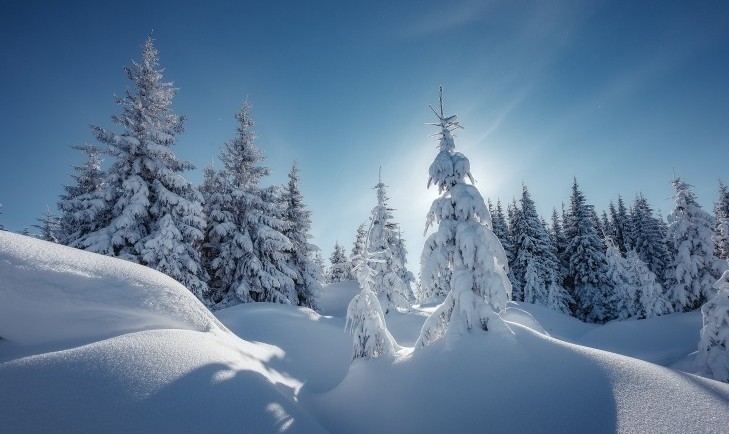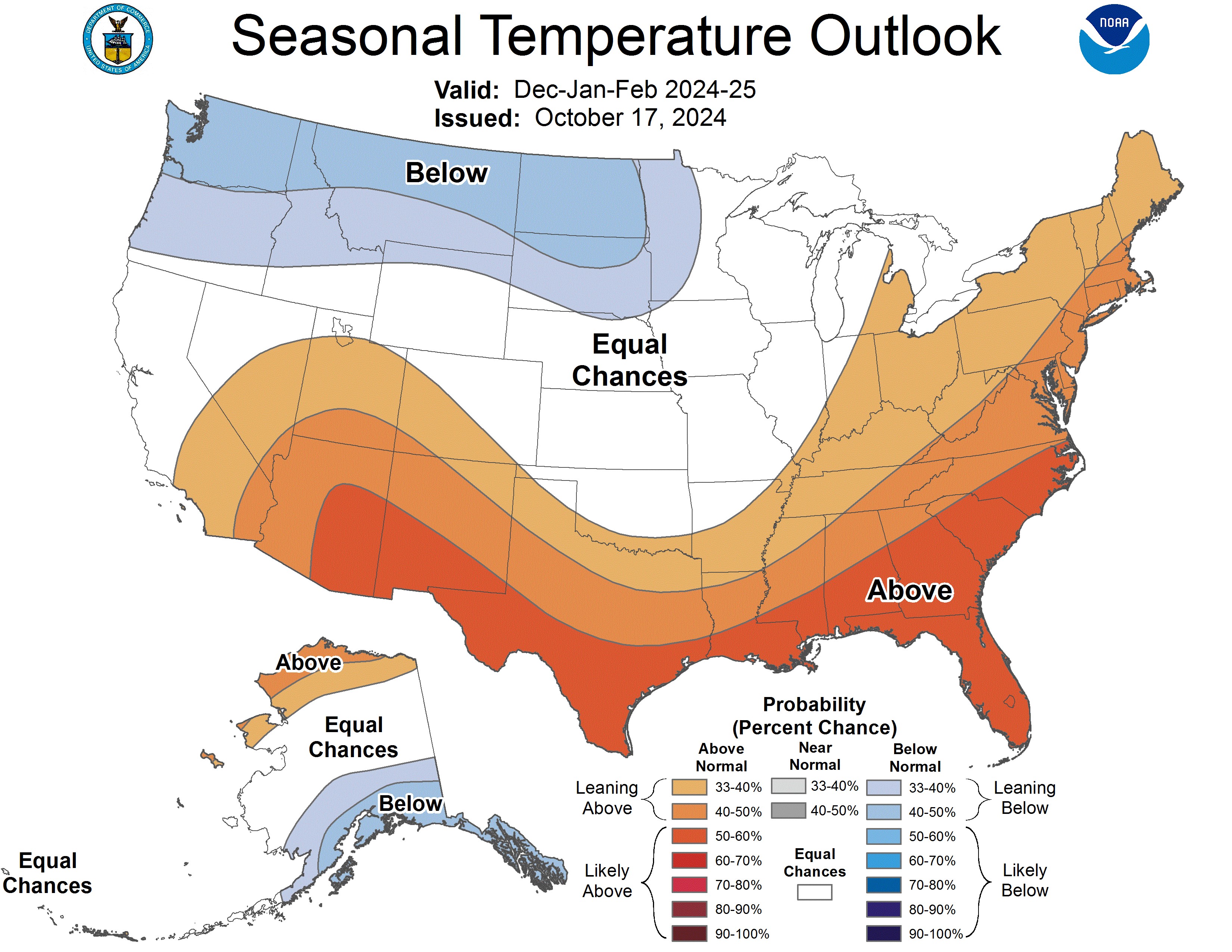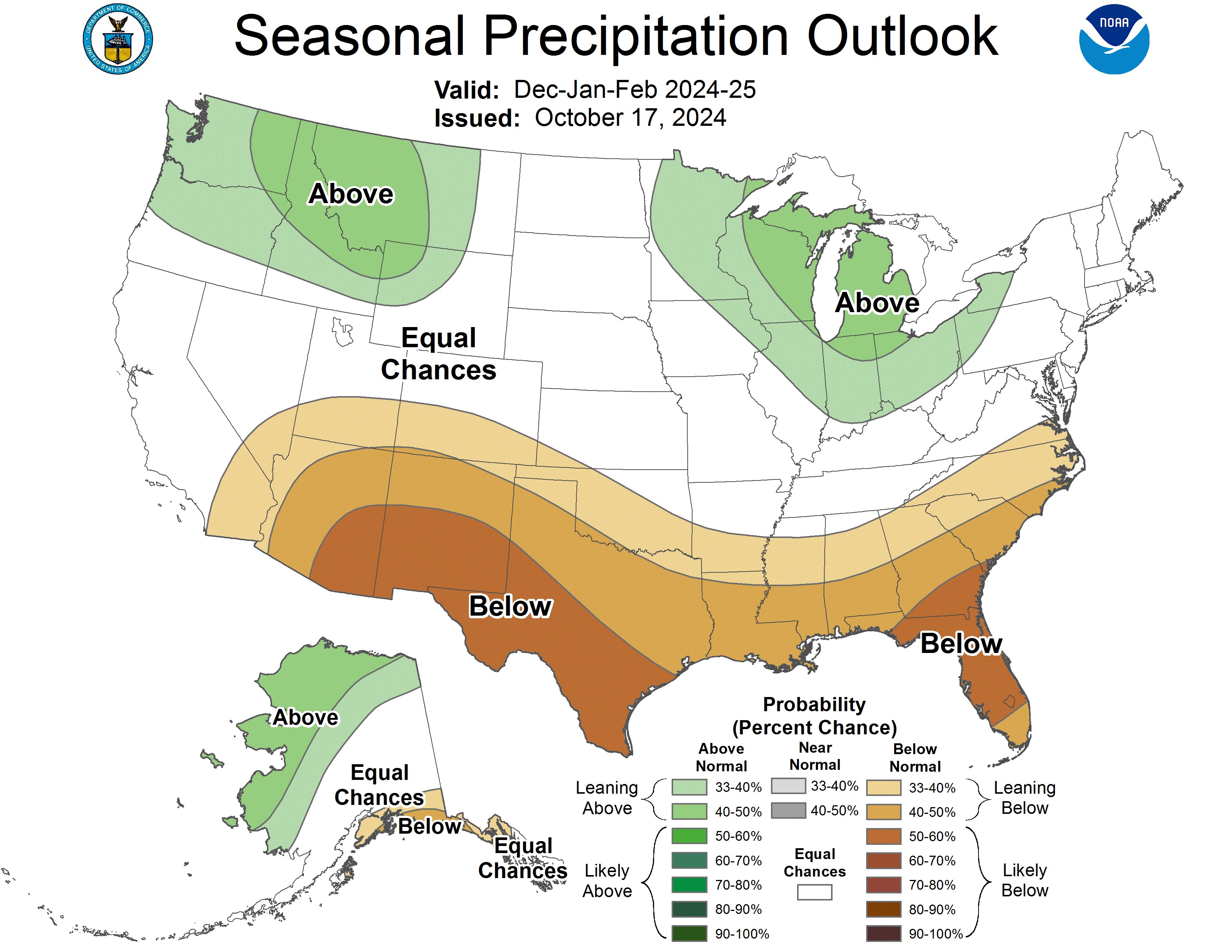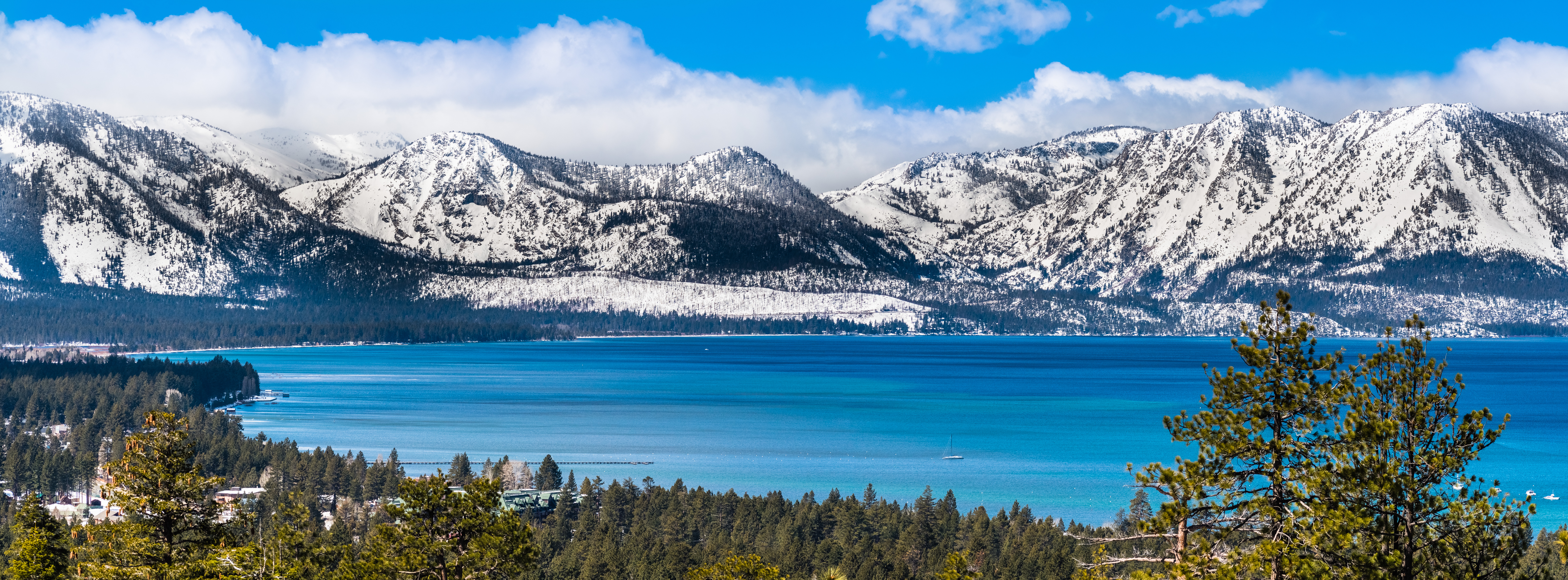11/01/24
Best of the West: Winter snow preview; balloons to track wildfires; native trout comeback; addiction recovery reinvented; downwinders for RECA; farming thin air

The Western Governors' Association keeps you updated on the latest news in the West. Here are the top stories for the week starting October 28, 2024. (Photos courtesy of Adobe Stock Images and the National Oceanic and Atmospheric Administration).
The snow is starting to fly in the West, with deep snow totals forecast to hit mountains in the Pacific Northwest, and accumulation likely to land in Colorado and Montana soon as well. This week, snow showers also helped firefighters contain the Elk and Pack Trail fires that have been burning in Wyoming, and a dusting of snow even fell in Hawaii.
With winter around the corner, let’s take a look at where in the West experts think it will snow the most.
Earlier this month, the National Oceanic and Atmospheric Administration released its annual winter forecast from its Climate Prediction Center, a division of NOAA’s National Weather Service.
The forecast, which stretches from December 2024 through February 2025, analyzes likely temperature, precipitation, and drought conditions across the country. While NOAA doesn’t forecast for snow totals in its outlook, experts say that variables like temperature and precipitation can shine a light on what winter snowfall might look like for much of the region.
According to the report, a La Niña climate pattern is likely to form in the coming months, with a 60% chance of it emerging by the end of November. La Niña is characterized by colder ocean temperatures in the Pacific, which tends to cause drier and warmer weather in the southern tier of the country, and cooler air and more precipitation in the northern regions.
If La Niña does emerge this year, it will reverse last year’s El Niño pattern, which was correlated with high global ocean temperatures and record-setting atmospheric rivers on the West Coast, according to NOAA.
La Niña this year is likely to be weaker and shorter than previous patterns, making it more difficult to forecast in advance.
As far as temperature, NOAA is calling for warmer-than-average temperatures for much of the southern tier of the country, including Texas, New Mexico, Arizona, and southern stretches of California, Colorado, and Utah. Warmer weather is also likely for northern Alaska.
A colder winter could be on tap for the Northwest and the High Plains, with states like Oregon, Washington, Idaho, Montana, North Dakota, South Dakota, and northern Wyoming more likely to see colder temperatures than average.
In the West, precipitation is forecast to favor the Pacific Northwest and areas of northern and western Alaska. Colder-than-average temperatures and above-normal precipitation could make for a particularly snowy winter for states in the northwest like Idaho, Oregon, Washington, and Montana.
On the flip side, this winter is predicted to be particularly dry for southern tier states like Texas, New Mexico, and Arizona.
Earlier this fall, the Old Farmer’s Almanac also released its annual winter weather forecast, which claims to traditionally be 80% accurate. The Almanac called for a “calmer, gentler” winter with temperature and snow totals near or below average for much of the country.
It does call for snow in the intermountain region, with snowy patterns for areas of Utah, Colorado, Nevada, and Washington.
For more on weather forecasting, check out Western Governors’ bipartisan letter to Senate leaders supporting aspects of the Weather Act to promote accurate weather forecasting and reliable water resource information.
Eye in the sky: the Forest Service is planning to monitor wildfires with an expanded fleet of high-altitude balloons next year. The balloons can fly about twice as high as airplanes, and they’re able to relay more accurate pictures of fires with high-tech cameras and communication technology.
The balloons can be remote-controlled to help monitor active fires and to keep tabs on potential ignitions in particularly rugged and remote terrain.
NASA, along with the Virginia-based company Aerostar, worked with the National Interagency Fire Center in Boise, Idaho, to deploy these balloons on test flights over western states this summer. They have deployed balloons over fires such as the West Mountain Complex fires in Idaho and the Dixie Fire in California.
Native trout return: the Lahontan cutthroat trout, the state fish of Nevada, was wiped out of Lake Tahoe nearly 100 years ago from overfishing, logging, and the introduction of non-native species. Now, the Nevada Department of Wildlife is undergoing a restoration project that is showing Lahontan trout successfully spawning in a tributary of the lake for the first time in 90 years.
Biologists studied the spawning patterns of the non-native rainbow trout, which is similar to the Lahontan, to better understand how to support reproduction in Lahontan trout populations. The Department of Wildlife has stocked these trout in the lake for years, though until now they could not get the hatchery-raised fish to spawn in Tahoe’s tributaries like their wild ancestors would.
While only a few have now exhibited this natural spawning behavior, biologists expect that number to rise as these fish restart a self-sustaining Lahontan cutthroat trout population in the lake.
Recovery Reinvented: North Dakota Governor Doug Burgum and First Lady Kathryn Burgum hosted the eighth annual Recovery Reinvented event in Bismarck on Wednesday. The event encouraged North Dakotans to build on eight years of progress toward eliminating the shame and stigma surrounding addiction.
In 2018, Governor Burgum signed an executive order creating the Office of Recovery Reinvented, and the First Lady has made addiction recovery her platform issue.
“I want to thank you for eight incredible years of working together to eliminate the shame and stigma of addiction. Your support and participation in Recovery Reinvented has made this movement possible,” said First Lady Kathryn Burgum. “The progress we’ve made in North Dakota in eliminating the stigma of addiction is a direct result of your efforts. ... I want to thank you for your courage, your strength and your resilience. Thank you for not giving up hope for recovery.”
Read Western Governors’ bipartisan policy resolution, Combating the Opioid Crisis, to learn more about the Governors’ shared policy on this issue.
Downwinders advocate for RECA: residents in Utah are pushing for the reauthorization and expansion of the Radiation Exposure Compensation Act (RECA), which lapsed back in June.
Downwinders – those who have been affected by radiation exposure stemming from nuclear weapons testing and related mining during the 1950s and 1960s – sent a letter to Utah’s House delegation urging them to support the reauthorization of RECA. The program, if reauthorized, would continue to provide compensation to downwinders and other affected groups, who have experienced high levels of cancer and other health abnormalities for decades.
This recent push comes on the heels of recent advocacy from downwinders in New Mexico, who traveled to Washington, D.C., to push for RECA.
In May, Western Governors sent a letter to House leadership urging RECA’s consideration by the full House. Read that letter here.
Farming the air: a growing cadre of companies are looking into ways to produce food out of thin air.
Air Protein, with its “air farm” in California, is one such company that hopes to turn bacteria into food while sucking carbon dioxide from the atmosphere and easing the strain on the world’s cropland.
These technologies grow bacteria that thrive on atmospheric carbon dioxide, nitrogen, oxygen, and water vapor. They reproduce and rapidly fill fermentation tanks, and can then be dried into a nutrient and protein-rich powder. The biggest hurdle for these new companies appears to be finding a palatable way to serve this new bacteria-based meal.
Check out the Decarbonizing the West initiative report, spearheaded by Wyoming Governor Mark Gordon, to learn about other ways that states can reduce carbon in the atmosphere and support cropland and forests.